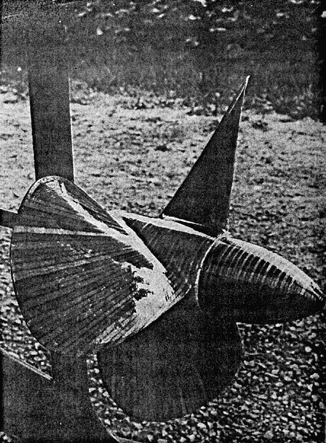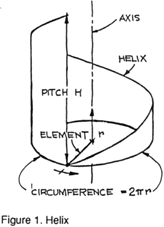| * DESIGN FILE * | Building a wooden propeller: * P. 1 * P. 2 * P. 3 * P.4 * ***T-SHIRTS*** |
|
How to make a wooden propeller |
||
 Laminated plywood propeller, 16"diameter x 24" pitch |
The following notes describe a method for constructing a propeller of epoxied laminations
of marine-grade plywood, suitable for the low power and rpm of human-powered watercraft,
and within the capabilities of one competent in elementary geometry and basic woodworking.
We will illustrate the procedure as applied to the making of a three-bladed "right-hand"
propeller, one which rotates clockwise in driving the boat ahead when viewed from behind
the boat, with a 16-inch (400-mm) diameter and a 24-inch (610-mm) pitch, based on the
Troost B3.35 model of 0.35 developed-area ratio to absorb 1/5-hp (150 watts) at 240 rpm
and produce about 13 lb. (58 N) of thrust in open water at 4.2 knots (2.2m/s) with
80% efficiency (1). The same procedure, of course, may be used for the construction of
propellers of similar characteristics and other dimensions. 
|
|
 |
© 2001-2013 by Philip Thiel Seattle WA USA |